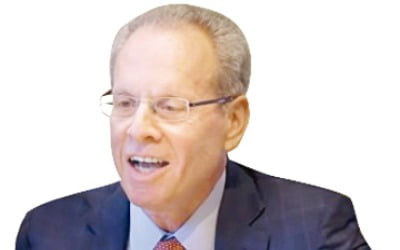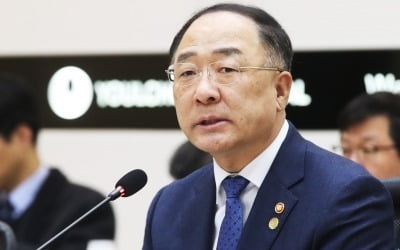로버트 배로 교수의 기고문 영문본 전문
-
기사 스크랩
-
공유
-
댓글
-
클린뷰
-
프린트
다음은 로버트 배로 하버드대 교수가 ‘Thoughts on income-led growth’라는 제목으로 한국경제신문에 보내 온 기고문 영문본 전문
The South Korean economy is weak and may be slipping into a recession. The projected GDP growth rate for 2019 is around 1.8 percent, the lowest in 10 years and sharply below the high average growth rates over the longer history. Particularly noteworthy is the negative growth rate of gross fixed investment—around -4.0% per year for 2019. This contraction of investment is a clear indicator of weak economic confidence and a sign of possible recession.
A fair way to assess South Korea’s macroeconomic situation is to compare with other Asian economies. I looked at a group of ten, some richer but mostly poorer than South Korea. The group includes China, India, Indonesia, Japan, Malaysia, Philippines, Singapore, Taiwan, Thailand, and Vietnam. The average of projected growth rates of GDP and gross fixed investment for 2019 for this group of ten are 4.0% and 3.5%, respectively. South Korea is well below these averages, surpassing only Japan and Singapore for GDP growth and coming in at the bottom for the growth of gross fixed investment.
It’s true that weak growth of exports is a contractionary factor throughout Asia—the average growth rate of exports for 2019 for the ten countries is 0.8%, only moderately above South Korea’s value of -1.8%. In this respect, South Korea does better than Indonesia, Japan, Singapore, and Thailand, which range from ‑2.0% to -2.8%. One way to look at these results is that South Korea can reasonably blame part of its weak current growth outlook on an export decline. However, this argument does not explain why South Korea is doing so much worse than the average of its Asian counter-parts in terms of growth rates of GDP and gross fixed investment.
To explain why South Korea’s outlook is notably worse than that of its Asian neighbors, one has to look at South Korea’s populist policies. These interventions include unwise restrictions on the labor market (in the forms of sharp increases in the minimum wage and ceilings on hours worked), expansions of welfare spending (including increases in “temporary” public-sector jobs), and increases in tax rates on businesses and high-income individuals. It’s all a recipe for discouraging investment, productivity, and economic growth more broadly. The situation is especially unfortunate because broad economic growth—rather than redistributions of income from rich to poor—has been the reason that millions of people in South Korea moved out of poverty since the late 1950s. Now this wonderful success is being squandered. Instead of referring to its policies as “income-led growth,” the government should be using the term, “income-led poverty.”
The South Korean economy is weak and may be slipping into a recession. The projected GDP growth rate for 2019 is around 1.8 percent, the lowest in 10 years and sharply below the high average growth rates over the longer history. Particularly noteworthy is the negative growth rate of gross fixed investment—around -4.0% per year for 2019. This contraction of investment is a clear indicator of weak economic confidence and a sign of possible recession.
A fair way to assess South Korea’s macroeconomic situation is to compare with other Asian economies. I looked at a group of ten, some richer but mostly poorer than South Korea. The group includes China, India, Indonesia, Japan, Malaysia, Philippines, Singapore, Taiwan, Thailand, and Vietnam. The average of projected growth rates of GDP and gross fixed investment for 2019 for this group of ten are 4.0% and 3.5%, respectively. South Korea is well below these averages, surpassing only Japan and Singapore for GDP growth and coming in at the bottom for the growth of gross fixed investment.
It’s true that weak growth of exports is a contractionary factor throughout Asia—the average growth rate of exports for 2019 for the ten countries is 0.8%, only moderately above South Korea’s value of -1.8%. In this respect, South Korea does better than Indonesia, Japan, Singapore, and Thailand, which range from ‑2.0% to -2.8%. One way to look at these results is that South Korea can reasonably blame part of its weak current growth outlook on an export decline. However, this argument does not explain why South Korea is doing so much worse than the average of its Asian counter-parts in terms of growth rates of GDP and gross fixed investment.
To explain why South Korea’s outlook is notably worse than that of its Asian neighbors, one has to look at South Korea’s populist policies. These interventions include unwise restrictions on the labor market (in the forms of sharp increases in the minimum wage and ceilings on hours worked), expansions of welfare spending (including increases in “temporary” public-sector jobs), and increases in tax rates on businesses and high-income individuals. It’s all a recipe for discouraging investment, productivity, and economic growth more broadly. The situation is especially unfortunate because broad economic growth—rather than redistributions of income from rich to poor—has been the reason that millions of people in South Korea moved out of poverty since the late 1950s. Now this wonderful success is being squandered. Instead of referring to its policies as “income-led growth,” the government should be using the term, “income-led poverty.”




![K팝 업계에도 '친환경' 바람…폐기물 되는 앨범은 '골칫거리' [연계소문]](https://img.hankyung.com/photo/202206/99.27464274.3.jpg)


